What do the numbers on stainless steel flatware actually mean?
You're shopping for new flatware and see numbers like 18/10, 18/8, and 18/0. It feels like a secret code, leaving you unsure if you're buying high-quality pieces or just overpaying.
The numbers represent the percentages of chromium and nickel in the steel. For example, "18/10" means the flatware is made of 18% chromium and 10% nickel. These components determine its shine, durability, and resistance to rust and corrosion.
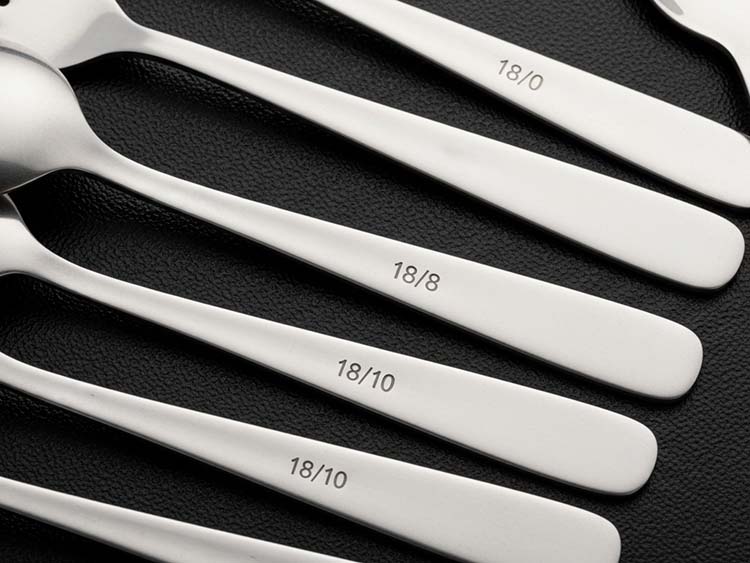
I remember talking to Jacky, a professional buyer for a major US brand. He told me, "Linc, the first thing I look at is the numbers. It tells me 90% of the story." He explained that while two forks might look identical on day one, the one with higher nickel content will still be shining after 500 dishwasher cycles, while the other might have spots of rust. The numbers aren't for decoration; they are a clear and honest specification of the metal's quality and how it will perform over time.
What Are the Grades of Flatware Stainless Steel?
You hear different terms like 304, 430, and 18/0 being used. This technical jargon makes it hard to compare products and understand what you are actually buying.
These are the names of the steel grades. 304 is the grade for 18/10 and 18/8 flatware. 430 is the grade for 18/0 flatware. Other grades like 420 are used for knife blades because they are harder and hold a sharp edge.
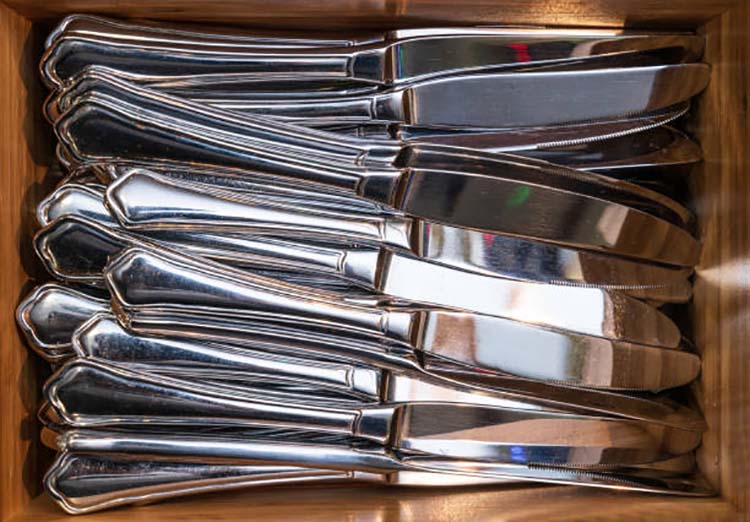
Think of the grades as different families of steel, each with its own strengths. The numbers are just a convenient way to describe them. Here is a simple breakdown of the grades you will encounter when buying flatware.
| Steel Grade/Marking | Composition (Cr/Ni) | Features | Corrosion Resistance | Hardness | Common Applications | Grade Positioning |
|---|---|---|---|---|---|---|
| 18/10 (304) | 18% Cr / 10% Ni | Optimal gloss, excellent corrosion resistance | ⭐⭐⭐⭐⭐ | ⭐⭐ | High-end tableware, hotels | Highest-end |
| 18/8 (304) | 18% Cr / 8% Ni | Close to 18/10, widely used | ⭐⭐⭐⭐ | ⭐⭐ | Home/restaurant | High-end |
| 201 | 16–18% Cr / 3.5–5.5% Ni | Alternative to 304, high strength, low cost | ⭐⭐⭐ | ⭐⭐ | Buffet tableware, mass market | Mid-range |
| 18/0 (430) | 18% Cr / 0% Ni | Nickel-free, economical and practical, easily magnetized | ⭐⭐ | ⭐⭐ | Children's tableware, mass market | Mid-range and low-end |
| 410 | 11.5–13.5% Cr | Heat-treatable, high hardness | ⭐ | ⭐⭐⭐⭐ | Table knife blades | Specialty knife materials |
| 420 | 12–14% Cr | High hardness, maintains sharpness | ⭐ | ⭐⭐⭐⭐⭐ | Table knives, scissors | Specialty knife materials |
| 430 (18/0) | 16–18% Cr | Low cost, poor corrosion resistance | ⭐⭐ | ⭐⭐ | Dinner plates, economical tableware | Mid-range and low-end |
Basically, the 304 family (18/10 and 18/8) is the premium choice for forks and spoons because it offers the best corrosion resistance. The 430 family (18/0) is the budget-friendly choice. It gets the job done but is more likely to stain over time. The 420 grade is a specialist. It's not as good at resisting rust, but its hardness is perfect for making a knife blade that can be sharpened and will hold its edge.
What Is the Best Number for Stainless Steel Flatware?
The 18/10 flatware is always the most expensive option. You wonder if the higher price is really worth it, or if it's just a marketing trick to get you to spend more.
18/10 is the best grade for high-quality flatware. The 10% nickel content provides superior rust resistance, a brighter shine that looks more like silver, and maximum durability. It represents the gold standard for fine dining and long-lasting home use.
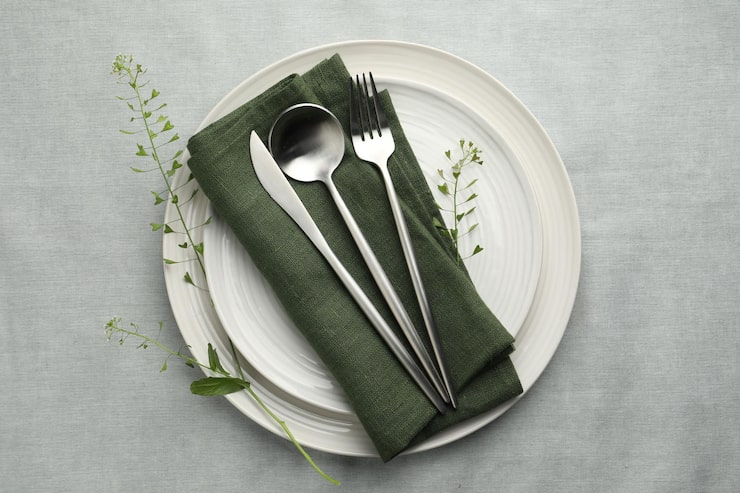
The key element that separates good flatware from the best is nickel1. All stainless steel has chromium, which is great for basic rust protection. But nickel takes that protection to the next level. It's especially effective at resisting corrosion from acids (like lemon juice and vinegar) and salt. This is why 18/10 flatware2 can go through the dishwasher thousands of times and still look brand new. Nickel is also what gives the flatware its beautiful, warm luster. It provides a brighter, more silvery sheen compared to the colder, grayer look of nickel-free steel. Of course, nickel is an expensive metal, which is why 18/10 costs more. But you are paying for performance and longevity. When a client like a luxury hotel chain places an order, they only consider 18/10. They know that the initial investment will pay off for years because the flatware will resist staining, won't need to be replaced often, and will always look brilliant for their guests.
How Can I Tell What Grade of Stainless Steel I Have?
You have a set of flatware at home, but you've lost the box. You want to know if it's the good stuff, but there are no obvious clues just by looking at it.
First, check the back of the handle for stamps like "18/10" or "18/8." If there are no stamps, use a simple kitchen magnet. If the magnet sticks firmly, it's almost certainly 18/0 (430 grade). If it doesn't stick, it's a higher 18/8 or 18/10 grade.
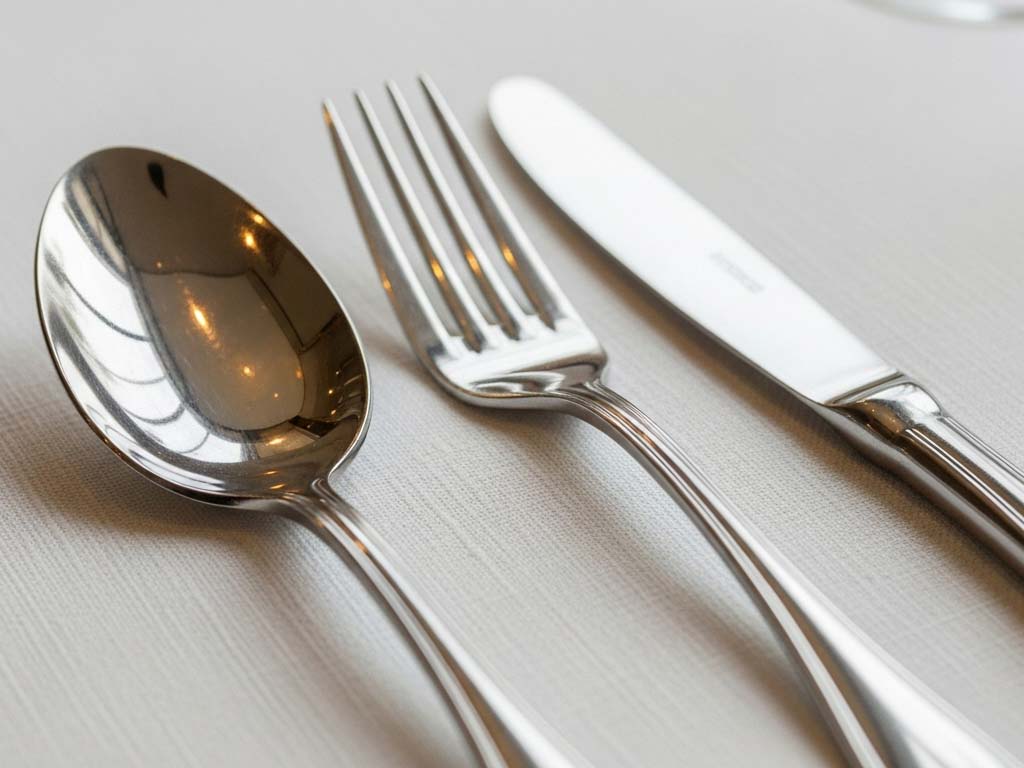
This is a great trick I teach all my new staff. It's a quick and surprisingly accurate way to sort steel.
1. Look for Stamps
Reputable manufacturers are proud of their materials. They will usually stamp the grade directly onto the piece. Look on the back of the fork or spoon handle for small engravings like "18/10," "18/8," or "Stainless Steel." This is the most reliable information you can get.
2. The Magnet Test
But what if there are no stamps? This is where the magnet comes in. The nickel in high-quality 304-grade steel (18/8 and 18/10) makes the metal non-magnetic (or very weakly magnetic). In contrast, 430-grade steel (18/0) has no nickel, so it is ferritic, meaning a magnet will stick to it strongly. So, grab a refrigerator magnet.
- Magnet Sticks: You have 18/0 (430) flatware. It's a budget-friendly grade.
- Magnet Does Not Stick: You have 18/8 or 18/10 (304) flatware. This is the higher-quality, more rust-resistant grade. Note that knife blades are almost always magnetic because they are made from a different, harder steel (like 420) to hold an edge. So only test your forks and spoons this way.
How Can You Tell the Quality of Stainless Steel Flatware?
All new flatware looks shiny and perfect in the box. But you know from experience that some will start to rust or bend after just a few months, and it's frustrating.
The best indicators of quality are the grade (like 18/10), the weight and balance in your hand, and the finish. Look closely for a smooth polish without any sharp edges, especially between the tines of a fork.
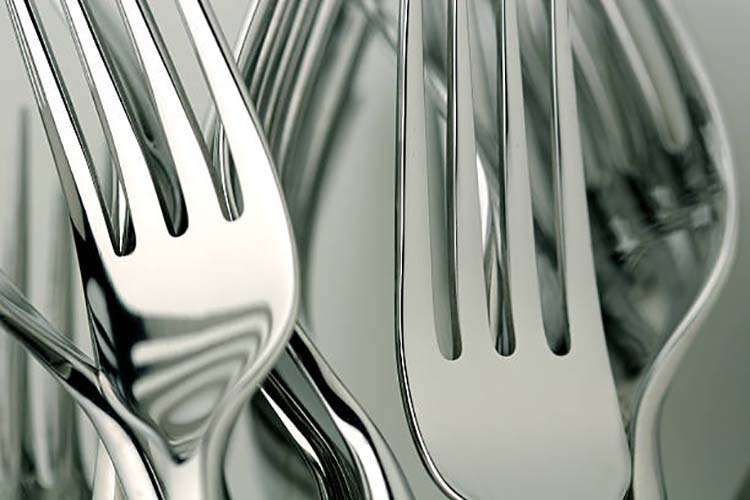
When I review a new sample, I use a three-step sensory check before I even think about the technical specs. First is the feel. I pick it up. Does it have a satisfying weight, or does it feel light and flimsy? A good piece of flatware feels balanced in your hand, not too heavy at the front or the back. Second is the touch. I run my finger along every surface. The edges should be perfectly smooth. A common sign of a cheap product is rough, sharp edges between the fork tines, which shows the factory rushed the polishing process. Third is the look. I hold it under a light. A mirror-polished piece should give a clear, undistorted reflection. A satin finish should be uniform and even. These physical clues are a great first indicator of craftsmanship. However, the most reliable test of the metal's internal quality is its grade, represented by those numbers. The feel and finish tell you about the factory's skill, but the numbers tell you about the quality of the raw material itself.
Conclusion
The numbers on flatware simply tell you its chromium and nickel content. 18/10 is the best grade, offering a lifetime of shine and durability for a smart, long-term investment.
